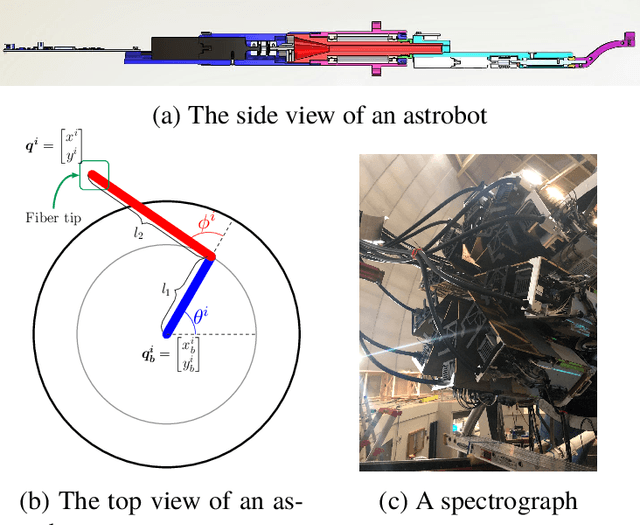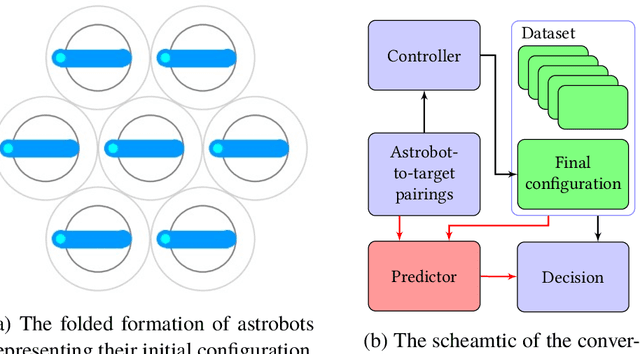Francesco Basciani
Learning convergence prediction of astrobots in multi-object spectrographs
Oct 05, 2022Abstract:Astrobot swarms are used to capture astronomical signals to generate the map of the observable universe for the purpose of dark energy studies. The convergence of each swarm in the course of its coordination has to surpass a particular threshold to yield a satisfactory map. The current coordination methods do not always reach desired convergence rates. Moreover, these methods are so complicated that one cannot formally verify their results without resource-demanding simulations. Thus, we use support vector machines to train a model which can predict the convergence of a swarm based on the data of previous coordination of that swarm. Given a fixed parity, i.e., the rotation direction of the outer arm of an astrobot, corresponding to a swarm, our algorithm reaches a better predictive performance compared to the state of the art. Additionally, we revise our algorithm to solve a more generalized convergence prediction problem according to which the parities of astrobots may differ. We present the prediction results of a generalized scenario, associated with a 487-astrobot swarm, which are interestingly efficient and collision-free given the excessive complexity of this scenario compared to the constrained one.
Data-Driven Convergence Prediction of Astrobots Swarms
May 29, 2020



Abstract:Astrobots are robotic artifacts whose swarms are used in astrophysical studies to generate the map of the observable universe. These swarms have to be coordinated with respect to various desired observations. Such coordination are so complicated that distributed swarm controllers cannot always coordinate enough astrobots to fulfill the minimum data desired to be obtained in the course of observations. Thus, a convergence verification is necessary to check the suitability of a coordination before its execution. However, a formal verification method does not exist for this purpose. In this paper, we instead use machine learning to predict the convergence of astrobots swarm. In particular, we propose a weighted $k$-NN-based algorithm which requires the initial status of a swarm as well as its observational targets to predict its convergence. Our algorithm learns to predict based on the coordination data obtained from previous coordination of the desired swarm. This method first generates a convergence probability for each astrobot based on a distance metric. Then, these probabilities are transformed to either a complete or an incomplete categorical result. The method is applied to two typical swarms including 116 and 487 astrobots. It turns out that the correct prediction of successful coordination may be up to 80% of overall predictions. Thus, these results witness the efficient accuracy of our predictive convergence analysis strategy.
 Add to Chrome
Add to Chrome Add to Firefox
Add to Firefox Add to Edge
Add to Edge